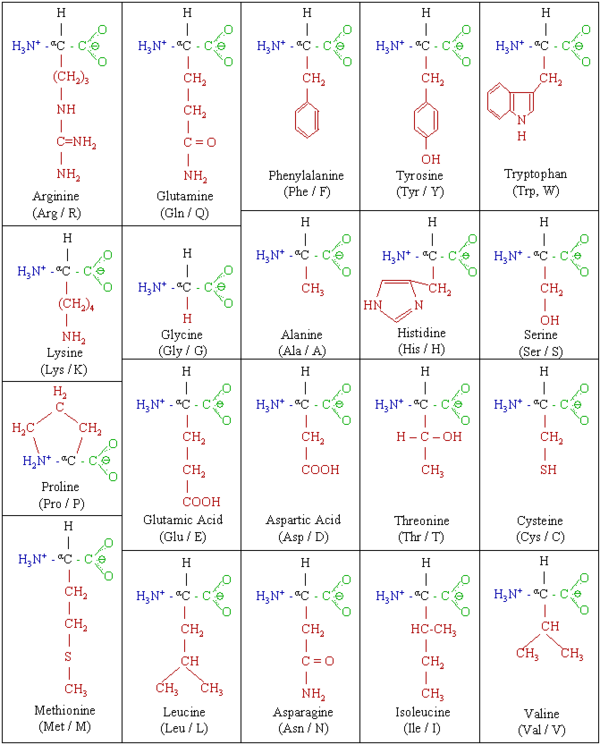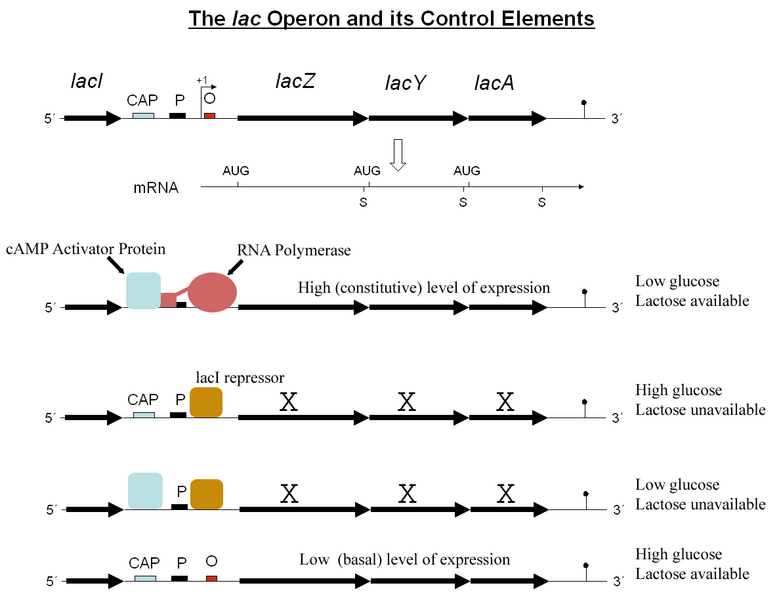| << Chapter < Page | Chapter >> Page > |
-Protection, including antibodies and components of the blood clotting cascade.
-Regulatory hormones, including insulin and growth hormone.
-Movement, due to the actin and myosin in our muscles.
-Transport, carried out by hemoglobin and albumin in our blood.

Examples of proteins include hemoglobin, collagen, thyroid hormone, insulin, and myosin. Disease is often a manifestation of improper protein function, which can result from genetic and/or environmental influences.
As researchers untangled the genetic code and the structure of genes in the 1950s and 60s, they began to see genes as a collection of plans, one plan for each protein. But genes do not produce their proteins all the time, suggesting that organisms can regulate gene expression. French researchers first shed light on gene regulation using bacteria, which is called differential gene expression.
When lactose is available, E. coli turn on an entire suite of genes to metabolize the sugar. Researchers tracked the events lactose initiates and found that lactose removes an inhibitor from the DNA. Removing the inhibitor turns on gene production.
The gene that produces the inhibitor is a regulatory gene. Its discovery altered perceptions of development in higher organisms. Cells not only have genetic plans for structural proteins within their DNA; they also have a genetic regulatory program for expressing those plans.
The details on this matter are described in the lecture 24*, where the lac operon plays a role of gene regulation unit, the schematic of which is shown below.

All cells in the body carry the full set of genetic information but only express about 20% of the genes at any particular time. Different proteins are expressed in different cells according to the function of the cell. Gene expression is tightly controlled and regulated.

Notification Switch
Would you like to follow the 'Genetics' conversation and receive update notifications?